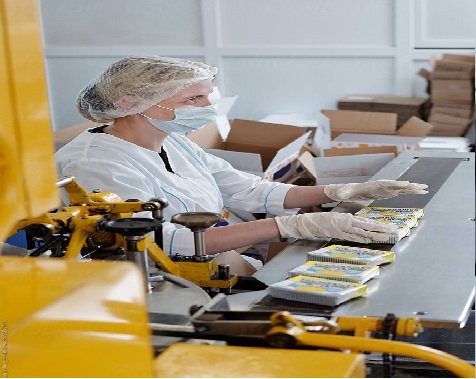Automatic packing machines are a key piece of technology used in warehouses and factories around the world. They help streamline the process of packing items, making them easier and more efficient to ship. In this blog post, we’ll provide a comprehensive guide to how automatic packing machines work and why they are so important for businesses.
Table of Contents
How an Automatic Packing Machine Works
Different Types of Automatic Packing Machines
The Advantages of Using an Automatic Packing Machine
Conclusion
How an Automatic Packing Machine Works
Automatic packing machines are devices designed to package products in a fast and efficient manner. They function by taking an object and putting it into a box or bag, or other containers. Once the item is secured, the machine applies labels or seals the container, which helps protect the product during shipping and handling.
The key components of an automatic packing machine are the conveyor, the packaging section, the labeling section, and the sealing section. The conveyor helps to transport items from the storage area to the packaging section. The packaging section takes the thing and places it into the chosen container. The labeling section applies any required labels, such as expiration dates and barcodes. Finally, the sealing section closes the container securely.
Different Types of Automatic Packing Machines
There are a variety of types of automatic packing machines available. Some of the most popular include:
1. Vacuum packaging machines: These machines use vacuum technology to tightly seal items in a pouch or bag. They are great for food items, medical supplies, and other sensitive products, as they eliminate the risk of contamination and keep out moisture, dust, and other contaminants.
2. Heat sealing machines: These devices use heat sealing technology to seal pouches and bags. They are perfect for sealing airtightly objects like food, cosmetics, and other stuff.
3. Shrink wrap machines: These machines use shrink wrap technology to enclose products in a durable plastic film. They are ideal for items that need to be shipped long distances without any risk of damage or contamination.
4. Flow wrapping machines: These machines use flow wrapping technology to quickly and securely wrap products in a plastic film. This type of packaging is often used for individually wrapped snacks and candies, as well as other small items that need to be protected from dirt, dust, and moisture.
The Advantages of Using an Automatic Packing Machine
The first advantage of an automatic packing machine is its speed. These machines can process packages quickly and accurately to save you time. This can lead to faster production and turnaround times, as well as more efficient distribution. Also, there is less risk of human error, which can often lead to costly mistakes.
They are also much more cost-effective than manual processes. Furthermore, they can help to minimize waste, as they may handle specific types of items and adjust for size variations.
Automated packing machines are highly flexible. They can easily be customized to accommodate any product or packaging requirements, like different sizes and shapes, etc. Additionally, some machines are more versatile with features like barcode scanning and labeling systems.
Overall, automated packing machines can help businesses with increased accuracy, cost savings, and efficiency.
Conclusion
It is essential to have a well-trained operator who can handle and maintain the equipment properly. With the proper training and maintenance, your automatic packing machine will ensure your business runs smoothly and efficiently.








